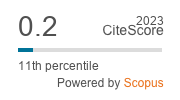European Payments in the Digital Age
DOI:
https://doi.org/10.54148/ELTELJ.2022.2.35Keywords:
e-payments, digitalisation, digital currency, CBDC, digital euroAbstract
As long as there are online users, secure and fast electronic payments are essential. More recently, the pandemic has also accelerated the digitalisation of payments and changed the general view of e-payment systems, not only in the EU but around the world. Consumers fear the risk of virus transmission and government directives to increase the number of non-cash payments have together resulted in a decrease in the amount of cash as a form of payment. At the same time, commercial entities in the private sector proceeded to issue new types of private digital currencies; stablecoins, in addition to bitcoin and other cryptocurrencies.
The decline of cash and the rise of new private digital currencies has pushed public authorities, especially central banks, to look for other alternatives, such as issuing new public central digital currencies. In order to increase the supply of payment services and provide the public with a different money delivery option as a result of changing payment habits, central banks around the world believe that issuing a central bank digital currency is increasingly likely. Like other regions, the Eurozone is no exception in terms of launching and testing its digital currency, the digital euro. The main concern is whether the Eurozone is ready to use this type of currency – whether technically or legally – and whether the digital euro will be used by consumers as the next form of payment.



